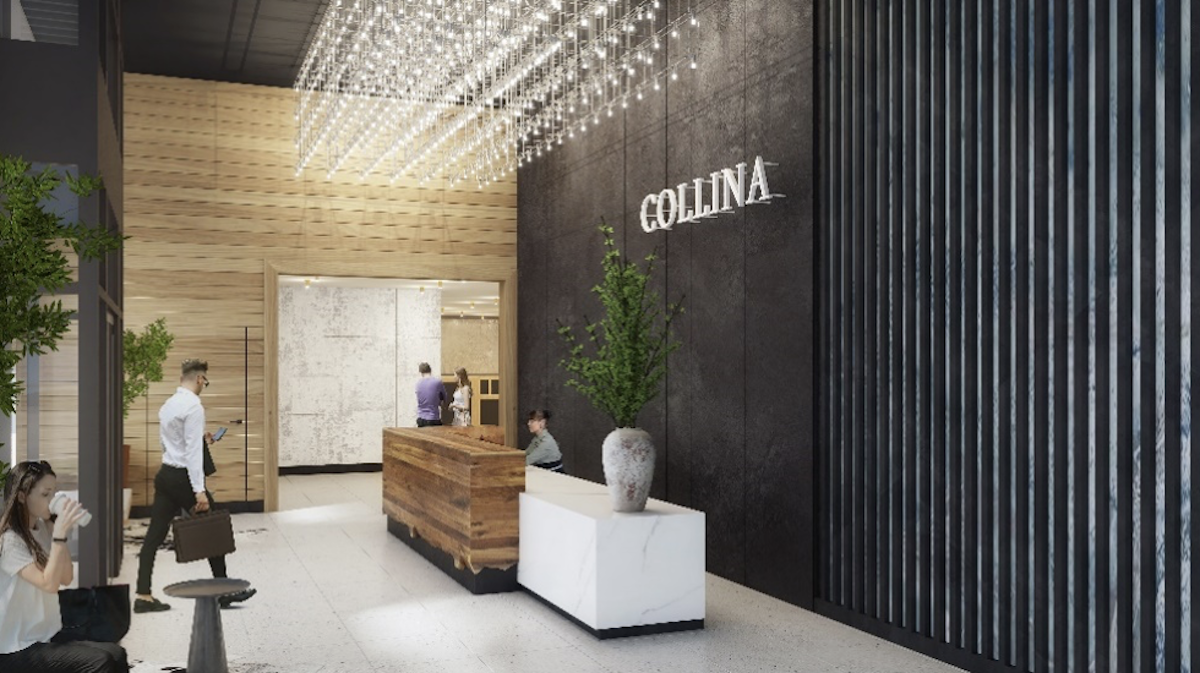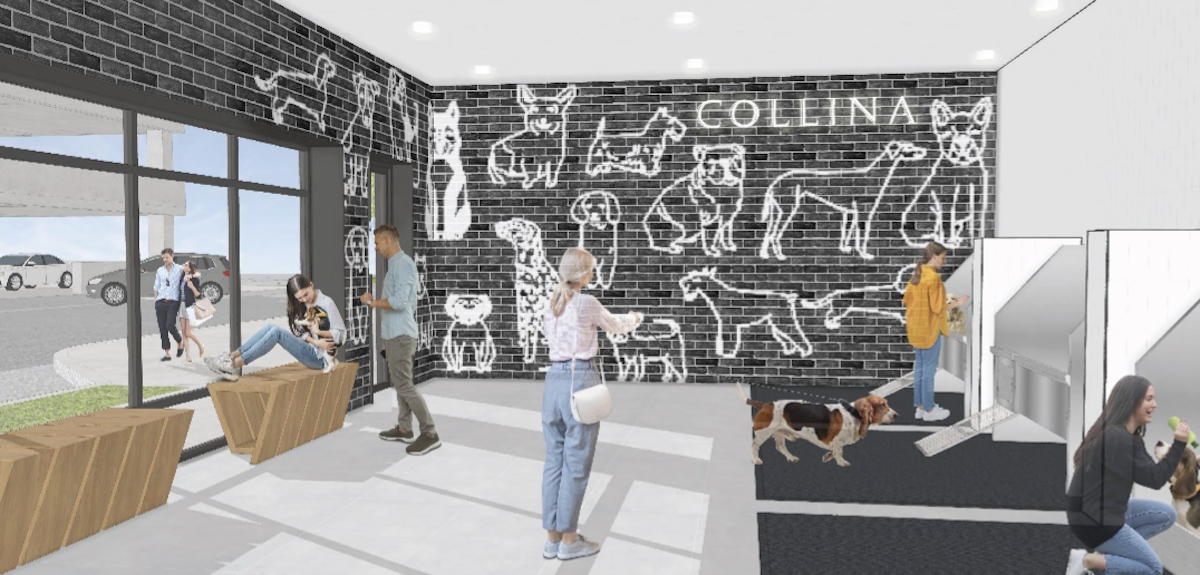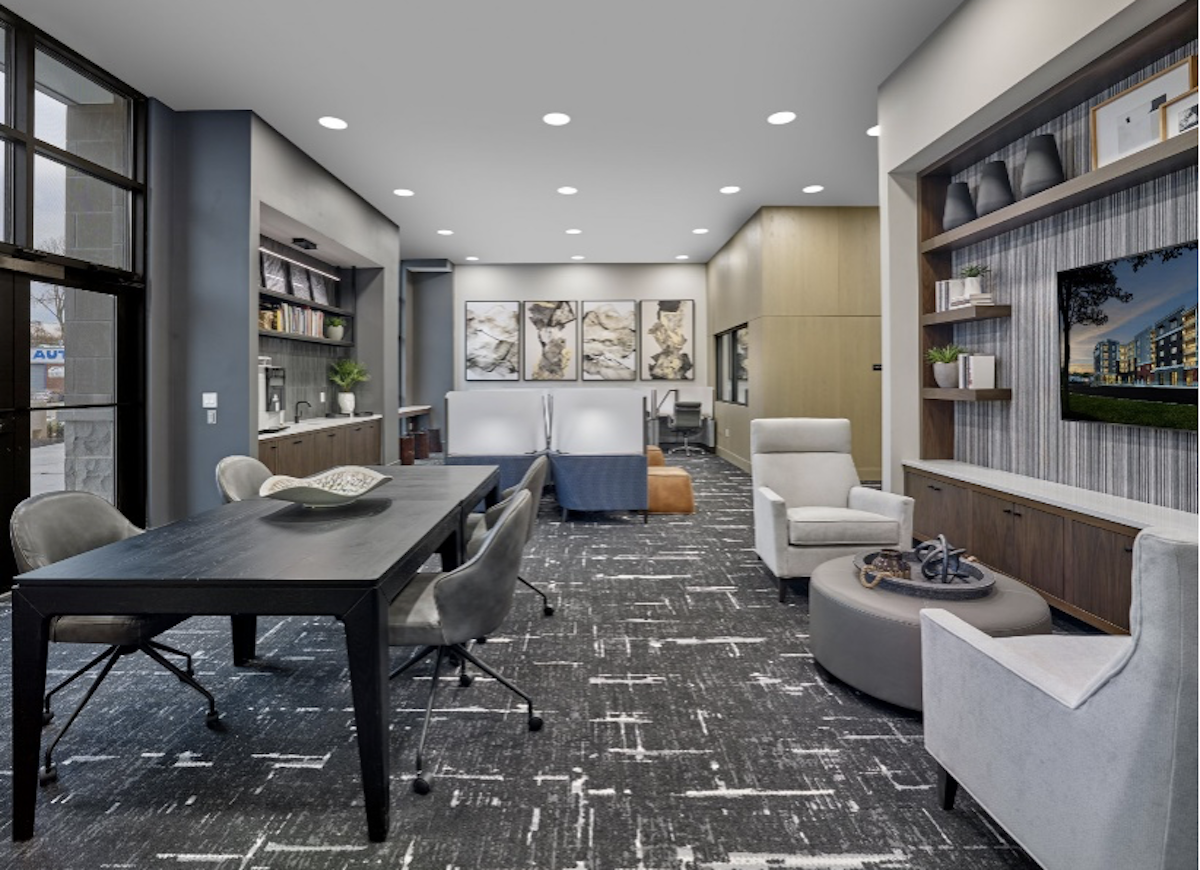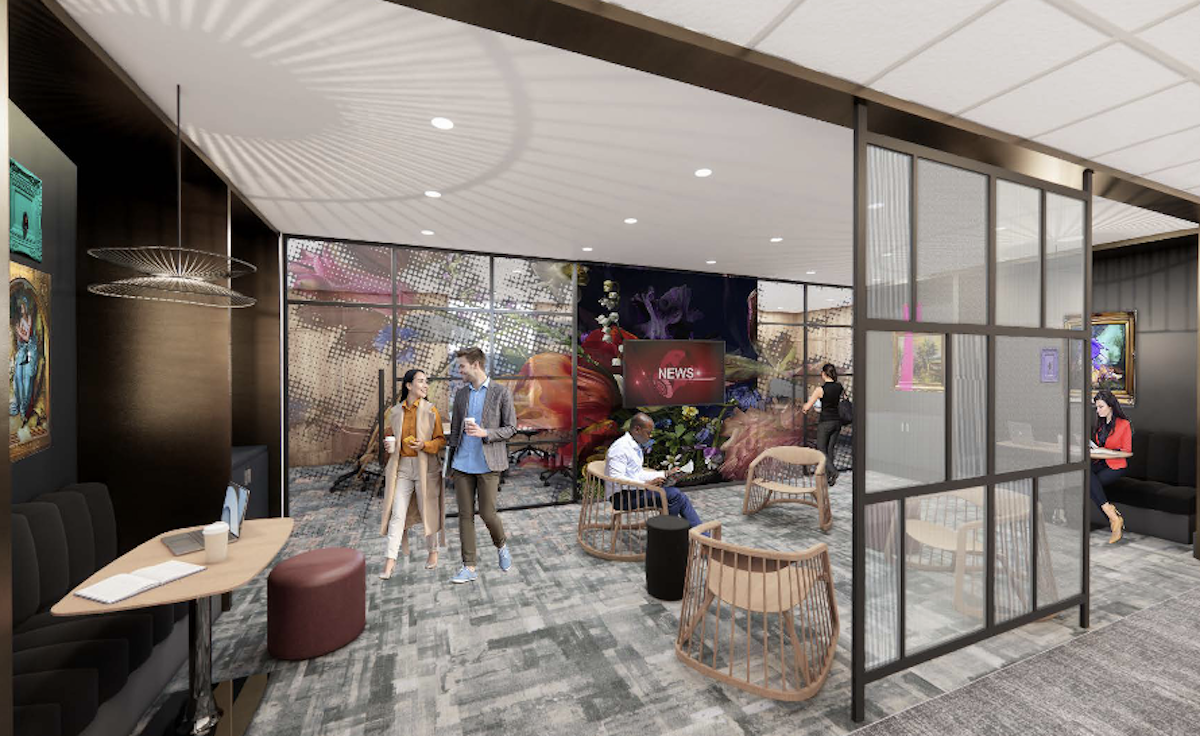The multifamily landscape is ever-evolving as changing demographics, health concerns, and work patterns shape what tenants are looking for in their next home. At Ci Design, our Residential Practice experts have identified five important trends that are reshaping the design of multifamily projects.
1. Encourage Healthy Habits
Apartment communities encompassing whole health, including physical, mental, social, and environmental wellness, can offer lasting benefits for residents. According to the World Health Organization, the built environment can influence up to 85% of our health outcomes.
Spacious clubhouses can surely draw in tenants, but more recently, walkability and outdoor connections outweigh extravagant perks. Curated outdoor spaces like a dog park or a central green plaza encourage social connections and a healthy lifestyle. Research has suggested connections to nature by bringing natural elements indoors can also offer restorative benefits.
Biophilic design can help activate the parts of our brain that reduce stress, help recharge our minds and bodies, and inspire us. Natural finishes that employ wood, water, stone, and living plants can offer a sense of calm and serenity. Views of the surrounding environment through spacious windows or balconies can also support exploration and stronger connections to the outdoors.
Pedestrian-friendly features such as walking trails or integrated parks can contribute to the overall appeal and sustainability of the development. Introducing state-of-the-art equipment in fitness centers can leverage an apartment building’s amenities, but integrating outdoor spaces that can accommodate group fitness like yoga can further attract potential tenants.
Aura Chapel Hill will include several features for the surrounding Chapel Hill, N.C., community to enjoy, such as public parks, on-site retail, and walking and biking trails. The client has also engaged an artist to provide two large sculptures that will provide focal points for these outdoor areas. While these outdoor spaces are meant to serve as a tenant amenity, they also bring a visual attractiveness to the community.
2. Emulate Resort-Style Living
Like grand resorts with all-inclusive offerings, multifamily developments are adopting a similar approach to create awe for guests within shared amenity spaces. Collina’s elegant lobby entrance establishes a feeling of luxury and higher-end commodity for residents within a busy commercial corridor in Baltimore County, Md.

A network of resort-style lavish green open spaces, such as public plazas and outdoor gardens, will create an active site, along with such amenities as a pool, club room, entertainment kitchen, game and media lounge, state-of-the-art fitness center, and co-working lounge.
This new wave of amenities also applies not only to occupiers’ pets. Pet-washing stations and spas have become a must-have in pet-friendly multifamily developments. Singles and renters make up the fastest-growing group of new dog owners, according to the American Veterinary Medical Association. This cost-friendly alternative offers pet owners an added convenience for their pups' grooming needs with self-service stations that are more manageable than maneuvering around a bathtub.

Evolve Companies’ multifamily project in Palm Coast, Fla., will feature a freestanding clubhouse that will house the complex’s leasing office and mail facility along with the project’s main amenities: a great room with lounge, kitchenette and dining area, business center, game room, and fitness center with dedicated yoga studio.
As part of the exterior amenities, the project will also offer a resort-style pool and outdoor gathering areas to take advantage of the Floridian weather and surrounding views.
3. Provide Co-Working Spaces
As hybrid work continues to be a way of life for many in the workforce, residents are seeking flexible living environments that cater to their lifestyles. Co-working spaces and common spaces with adaptable furnishings encourage social interaction throughout one’s remote workday, and designing separate work environments from living spaces promotes a healthier work-life balance. Multifamily developments providing work-friendly spaces, flexible floor plans and amenities such as quiet and private meeting rooms are becoming more attractive as the typical 9 to 5 office workday is becoming less common.

4. Create Instagrammable Moments
The next generation of renters want spaces that create a “Wow!” factor when they walk in. An apartment lobby or amenity should present the perfect opportunity for a photograph or Instagrammable moment, outdoors or in. Modernized design elements and eye-catching art pieces within co-working or gathering spaces provide renters with a fresh backdrop to share with their own community. Proximity to outdoor spaces like courtyards or a resort-style pool further encourages a scenic lifestyle that young tenants are craving.

Amenities in the Ruxton Tower Apartments in Towson, Md., feature colorful artwork and bold graphics throughout the wallcoverings to not only bring a contemporary note to the design but also provide a fresh, dynamic quality to each space.
5. Elevate Lifestyles, Well-Being, Social Connections
In the fast-paced realm of multifamily developments, staying ahead means crafting unforgettable experiences that resonate with residents and visitors alike. It's not just about meeting basic needs anymore; it's about curating spaces that elevate lifestyles, boost well-being, and foster vibrant social connections.
Our approach infuses every aspect of design with innovation and intentionality. From cutting-edge amenities that promote health and productivity to tailored communal spaces that encourage community building, we're committed to shaping sustainable environments that leave a lasting impact on every individual (and pet) who calls them home.
About the Authors
Tim Schelfe, FASID, CID, is a Ci Principal with more than 35 years' experience as Director of Interior Design & Procurement. Schelfe has received more than 40 design awards for his portfolio of multifamily, hospitality, commercial, senior living, and custom residential interior design projects. He has served as Chair of the National Board of Directors for ASID and as a Past President of the ASID Carolinas Chapter.
Wendy Oberer, Assoc. AIA, Associate Principal, has over two decades of design and project management experience for multifamily, senior living, and mixed-use developments. She has extensive experience in all phases of a project, including project management, programming, master planning, schematic design, construction documents, and construction administration.
About Ci Design
Ci Design is an award-winning design firm with practices in science and technology, commercial and mixed-use, residential, mission critical, workplace, and industrial manufacturing and offices in Baltimore, Boston, Dallas, Arlington, Va., Greenville, S.C., and Raleigh, N.C. Ci’s 100+ team members provide architecture, planning, landscape design, experiential graphics and branding, lab and manufacturing planning, interior design, procurement, strategy, and change management services.
Related Stories
Mixed-Use | Aug 21, 2024
Adaptive reuse of a Sears store becomes luxury mixed-use housing
6 Corners Lofts at 4714 W Irving Park Road, Chicago, Ill., opened in March of 2024 as a 394,000-sf adaptive reuse project born out of a former Sears store.
Multifamily Housing | Aug 21, 2024
Nation's leading multifamily developer expands into infrastructure
Greystar's strategy for infrastructure is driven by the shifting landscape of today's cities—primarily in the increased digitization, urbanization, and transitions to clean energy.
MFPRO+ New Projects | Aug 20, 2024
Seattle workforce housing project inspired by geology of eastern Washington
J.G. Whittier Apartments, a workforce housing project in Seattle uses the geology of eastern Washington as inspiration for the design. The architecture and interior design celebrate geometric anomalies found in nature. At the corners of the building, blackened wood siding “erodes” to expose vibrant murals underneath.
MFPRO+ New Projects | Aug 16, 2024
At 60 stories, the Paramount multifamily development will stand as Nashville’s tallest high rise
When complete, the 60-story Paramount building, at 750 feet high, will be the tallest high rise tower in Nashville, Tenn., surpassing the city’s current record holder, the 617-foot AT&T Building. The $390 million Paramount project recently launched condo sales after securing more than $230 million in construction financing.
Adaptive Reuse | Aug 14, 2024
Adaptive reuse revives a former warehouse in St. Louis
The Victor, as the building is now called, has nearly 400 residential apartments.
MFPRO+ News | Aug 14, 2024
Report outlines how Atlanta can collaborate with private sector to spur more housing construction
A report by an Urban Land Institute’s Advisory Services panel, commissioned by the city’s housing authority, Atlanta Housing (AH), offered ways the city could collaborate with developers to spur more housing construction.
Modular Building | Aug 13, 2024
Strategies for attainable housing design with modular construction
Urban, market-rate housing that lower-income workers can actually afford is one of our country’s biggest needs. For multifamily designers, this challenge presents several opportunities for creating housing that workers can afford on their salaries.
MFPRO+ Research | Aug 9, 2024
Apartment completions to surpass 500,000 for first time ever
While the U.S. continues to maintain a steady pace of delivering new apartments, this year will be one for the record books.
Affordable Housing | Aug 7, 2024
The future of affordable housing may be modular, AI-driven, and made of mushrooms
Demolished in 1989, The Phoenix Ironworks Steel Factory left a five-acre hole in West Oakland, Calif. After sitting vacant for nearly three decades, the site will soon become utilized again in the form of 316 affordable housing units.


















